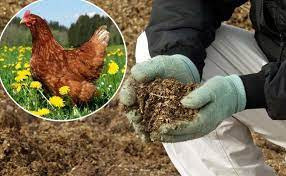
1. EKOR G Potassium Humate
This is a multipurpose new generation preparation based on humic substances — organic compounds with a complex physical and chemical structure that have a wide range of biological effects, are environmentally friendly and safe to use.
The preparation is made of lowland peat using a unique method, the main elements of the production line are dispersers and steam reactors. The original pulp passes through the reactor, a colloid solution is formed from peat with simultaneous processes of extraction, solution, disintegration of cell structures, destruction of cellulose, followed by recombination at the molecular level. The process occurs at a low temperature and is accelerated by dispersion. The unique technological approach allows biologically active natural ingredients, trace elements and macronutrients to be saved and accumulated and subsequently stabilize due to a negatively charged humus acid. The produced preparation contains more than 30 elements of mineral and organic substances, including all essential trace elements, 20 amino acids, and also vitamins. It also includes a number of microorganisms — destructors of organic substances (spore bacteria, mold fungi, actinomycetes, cellulose-decomposing bacteria).
2. Bird droppings processing scheme
Processing organic waste with a working solution (EKOR + WATER) allows the activation of ion exchange, complex formation and donor-acceptor interaction with the formation of a layered polymer between functional groups of the preparation and bird droppings. The nitrification process (decomposition of ammonia in droppings and turning it semi-matured manure) occurs within 72 hours, the specific smell of droppings disappears.
As a result, we obtain an organic mineral fertilizer with a prolonged action.
The calculation of the environmental hazard class of droppings after processing in accordance with the Criteria for Assigning an Environmental Hazard Class to Hazardous Waste approved by the Order of the Ministry of Natural Resources of Russia No. 511 dated June 15, 2001, showed that the waste is non-hazardous due to a low hazard indicator, which corresponds to class 5.
The preparation can be used in poultry houses and organic waste storages.
Poultry house treatment scheme
In cage-type poultry houses bulk containers are installed at a height of more than two meters from the watering site. The elevation is required to create artificial pressure. Polypropylene pipes are connected to the bulk containers to conduct the working solution. Four valves are installed in a two-cage interval along the length of the pipes. The valves regulate droppings watering. The fourth valve is required to turn off the supply of the solution when droppings are absent. At the ends of the pipes between the batteries there are nozzles to increase the droppings watering area. The working solution is filled in the bulk containers when required with by an ASM machine through a hose that is brought outside. The back-flow valve installed on the machine minimizes spillage of the solution when it is disconnected. Calculations are made by employees of the poultry house, who order the filling of the bulk containers in advance and mix the preparation with water. Preparation of the working solution for watering the droppings is carried out in the tank installed in the poultry house. The volume of the solution directly depends on the age and nutrition of birds. The watering with a prepared solution should be more intensive for older birds with more humidity in droppings.
To have a positive effect of litter disposal, it is necessary to effectively mix the EKOR solution with bird droppings.
3. Recommended doses
The recommended dose of the preparation is 30-50 L per ton of droppings and depends on the age, housing and nutrition of animals and birds.
The treatment is carried out with a working solution (drug + water), the optimal ratio of which is 1:1, i.e. 500 L of the preparation and 500 liters of water per container.
